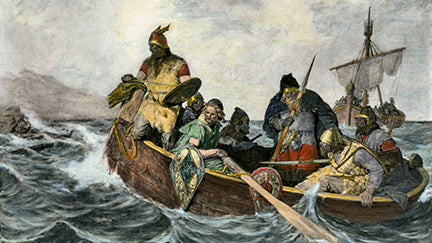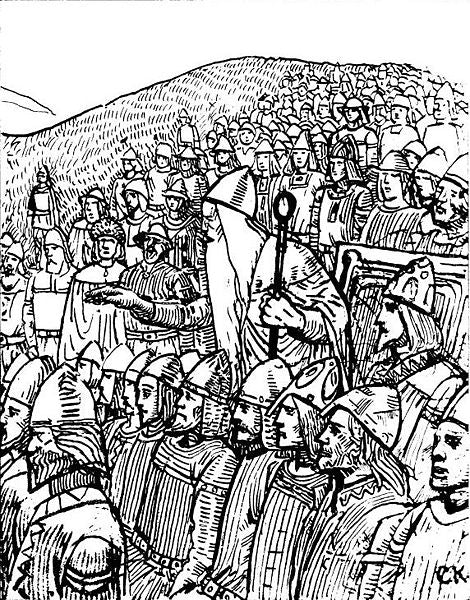![]()
In Viking culture, the passage of time was marked by a calendar system closely connected to nature and the changing seasons. One notable month in the Viking calendar is Sólmánuður, which translates to "Sun Month" or "Month of the Sun." In this blog post, we will explore Sólmánuður, its significance in Viking society, and the activities and traditions associated with this special month.
1. Sólmánuður in the Viking Calendar
- Calendar Systems: We will provide an overview of the Viking calendar system, which was lunar-based and divided into months based on the lunar cycle.
- Position of Sólmánuður: We will highlight where Sólmánuður falls within the Viking calendar year and its connection to the summer season.
2. Celebration of the Sun
- Solar Symbolism: The Vikings revered the sun as a powerful symbol of warmth, light, and life. We will delve into the significance of the sun in Viking cosmology and its association with deities such as Sól (the sun goddess) and Freyr (the god of fertility).
- Midsummer Festivities: Sólmánuður marked the time of the summer solstice, a significant celestial event celebrated by the Vikings with feasts, bonfires, and various rituals.
3. Agricultural Activities
- Harvesting Season: Sólmánuður was a crucial time for agricultural activities, as crops ripened under the warmth of the sun. We will explore the importance of harvesting and the rituals associated with thanking the gods for a bountiful yield.
- Cultivation and Planting: We will also touch upon the planting and cultivation practices during Sólmánuður, including the tending of gardens and fields.
4. Outdoor Pursuits and Festivities
- Navigation and Exploration: With favorable weather conditions, Sólmánuður was an ideal time for Viking explorations and voyages. We will discuss the significance of maritime activities during this month.
- Sporting Events and Competitions: Vikings engaged in various sporting activities during Sólmánuður, including archery, wrestling, and horse racing. We will explore the importance of these competitions in fostering social bonds and showcasing physical prowess.
Conclusion:
Sólmánuður, the Viking month of the sun, was a time of celebration, abundance, and outdoor activities. The sun, being a symbol of vitality and fertility, held great significance in Viking culture. By understanding Sólmánuður and its associated traditions, we gain insights into the deep connection between the Vikings and the natural world, and how they marked the passage of time with reverence and joy.
Works Cited:
- Davidson, Hilda Ellis. The Lost Beliefs of Northern Europe. Routledge, 1993.
- Harrison, D. P. "The Viking Calendar and the Medieval Calendar Year." Scandinavian Studies, vol. 50, no. 1, 1978, pp. 1-18.
- Price, Neil. Children of Ash and Elm: A History of the Vikings. Basic Books, 2020.
- Roesdahl, Else, and David M. Wilson. From Viking to Crusader: The Scandinavians and Europe, 800-1200. Nordic Council of Ministers, 1992.
[Image: Illustration of Vikings celebrating midsummer with bonfires and feasts]
Note: The image used is for illustrative purposes only and does not depict a specific Sólmánuður celebration.





Leave a comment
This site is protected by hCaptcha and the hCaptcha Privacy Policy and Terms of Service apply.